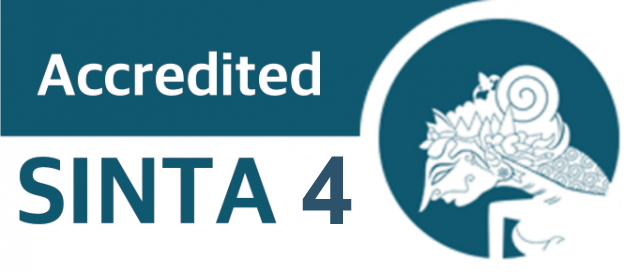The Effect of Implementing Interactive Learning Media Based on Virtual Laboratory on Student Learning Outcomes in Force Topic
DOI:
10.29303/jpm.v20i1.8403Published:
2025-01-30Issue:
Vol. 20 No. 1 (2025)Keywords:
Force; Learning Media; Learning Outcomes; Virtual LaboratoryArticles
Downloads
How to Cite
Downloads
Metrics
Abstract
Learning media is a teaching aid that educators can use to convey lesson material, increase student creativity, and increase student attention during the learning process. This research examines the effect of implementing interactive learning media based on virtual laboratory on student learning outcomes in force topic at SMP Negeri 1 Gorontalo. This research uses an experimental method, and the research design used is a group pre-test and post-test design. The subjects of this research were 30 students in each class divided into three classes: experimental class, replication 1, and replication 2. The data analysis techniques used are normality, hypothesis, and n-gain tests. The results of the hypothesis testing criteria were T-count ≥ T-table with a level of ∝ = 0.05 for the experimental class, replication 1, and replication 2; therefore, Ho is rejected, and Ha is accepted. This is also supported by the acquisition of the course average normalized gain for all sample classes, both experimental and replication classes, which fall into the high and medium categories in the experimental class (0.71), replication 1 (0.70), and replication 2 (0.66). Data analysis shows that the average post-test score for the experimental and replication classes is higher than the pre-test. This indicates that virtual laboratory media improves student learning outcomes in force topics. This research concludes that using interactive learning media based on virtual laboratories can be an effective alternative for improving the quality of science learning in schools.
References
W. Somayan, "Peningkatan hasil belajar siswa melalui metode pakem," Jurnal Pendidikan Indonesia, vol. 1, no. 03, pp. 283-294, 2020. https://doi.org/10.59141/japendi.v1i03.33
T. Nabillah, and A. P. Abadi, "Faktor penyebab rendahnya hasil belajar siswa," Prosiding Sesiomadika, vol. 2, no. 1c, 2020.
K. Adisaka, I. G. Margunayasa, and I. W. Gunartha, "Pengaruh metode pembelajaran kolaboratif terhadap minat dan hasil belajar matematika siswa kelas V." Jurnal Ilmiah Pendidikan Citra Bakti, vol. 9, no. 1, pp. 141-152, 2022. https://doi.org/10.38048/jipcb.v9i1.670
S. Wulandari, "Media pembelajaran interaktif untuk meningkatkan minat siswa belajar matematika di smp 1 bukit sundi," Indonesian Journal of Technology, Informatics and Science (IJTIS), vol. 1, no. 2, pp. 43-48, 2020. https://doi.org/10.24176/ijtis.v1i2.4891
M. Yunus, M. R. Ardiansyah, J. Jufri, A. Adyanata, A. Setiawan, and R. W. Rina, “Pengaruh Pembelajaran Berbasis Website Terhadap Hasil Belajar Siswa,” Jurnal Pendidikan Teknologi Informasi (JUKANTI), vol. 6, no. 2, pp. 21–32, 2023. https://doi.org/10.37792/jukanti.v6i2.931
U. B. Harsiwi and L. D. D. Arini, “Pengaruh Pembelajaran Menggunakan Media Pembelajaran Interaktif terhadap Hasil Belajar siswa di Sekolah Dasar,” Jurnal Basicedu, vol. 4, no. 4, pp. 1104–1113, 2020. https://doi.org/10.31004/basicedu.v4i4.505
T. Abdjul, “Pengaruh Penerapan Pembelajaran Berbasis Virtual Laboratory terhadap Hasil Belajar Siswa pada Konsep Gelombang Bunyi dan Cahaya di SMA Kabupaten Bone Bolango,” Seminar Nasional Teknologi Sains Dan Humaniora (SemanTECH), vol. 2019, pp. 382–387, 2019. https://doi.org/10.30869/semantech.v4i1
M. Hasan, Milawati, Darodjat, H. Khairani, and T. Tahrim, “Media Pembelajaran. In Tahta Media Group, 2021.
Saleh & D. Syahruddin, “Media Pembelajaran,” pp. 1–77, 2023.
R. Rejeki, M. F. Adnan, and P. S. Siregar, “Pemanfaatan Media Pembelajaran pada Pembelajaran Tematik Terpadu di Sekolah Dasar,” Jurnal Basicedu, vol. 4, no. 2, pp. 337–343, 2020. https://doi.org/10.31004/basicedu.v4i2.351
T. Abdjul, and N. E. Ntobuo, “Developing Device of Learning Based on Virtual Laboratory through Phet Simulation for Physics Lesson with Sound Material,” International Journal of Sciences: Basic and Applied Research (IJSBAR) International Journal of Sciences: Basic and Applied Research, vol. 39, no. 2, pp. 105–115, 2018.
R. Haryadi and H. Pujiastuti, “PhET simulation software-based learning to improve science process skills,” Journal of Physics: Conference Series, vol. 1521, no. 2, 2020. https://doi.org/10.1088/1742-6596/1521/2/022017
I. Lasumbu, D. D. Paramata, T. Abdjul, A. H. Odja, D. G. E. Setiawan, W. M. Mohamad, “Efforts to Increase Students' Problem-Solving Abilities Through the Application of PBL Assisted by Virtual Laboratory on the Hydrostatic Pressure Concept,” Jurnal Penelitian Pendidikan IPA, vol. 10, no. 8, pp. 6245-6251, 2024. https://doi.org/10.29303/jppipa.v10i8.8058
N. Fitria, M. K. R. Aziizi, T. Hardoyo, B. Supriadi, A. Harjianto, and M. R. Junaidi, “Penggunaan Phet Simulation Untuk Meningkatkan Aktivitas Dan Hasil Belajar Siswa Smp Islam Panggul,” OPTIKA: Jurnal Pendidikan Fisika, vol. 7, no. 2, pp. 428–438, 2023. https://doi.org/10.37478/optika.v7i2.3394
N. F. Dalu, T. Abdjul, N. E. Ntobuo, “Pengaruh Model Pembelajaran Berbasis Virtual Laboratory Terhadap Hasil Belajar Siswa Pada Meteri Gelombang Bunyi dan Gelombang Cahaya,” Jambura Physics Journal, vol. 2, no. 2, pp. 54–64, 2020. https://doi.org/10.34312/jpj.v4i2/14759
R. I. Nurrohma and G. A. Y. P. Adistana, “Penerapan Model Pembelajaran Problem Based Learning Dengan Media E-Learning Melalui Aplikasi Edmodo Pada Mekanika Teknik,” Edukatif : Jurnal Ilmu Pendidikan, vol. 3, no. 4, pp. 1199–1209, 2021. https://doi.org/10.31004/edukatif.v3i4.544
E. Hartati, “Penerapan Model Problem Based Learning (PBL) Untuk Meningkatkan Hasil Belajar Ipa Siswa Pada Konsep Tekanan,” EDUCATOR : Jurnal Inovasi Tenaga Pendidik Dan Kependidikan, vol. 2, no. 1, pp. 47–55, 2022. https://doi.org/10.51878/educator.v2i1.1092
D. Rosyidi, “Teknik dan Instrumen Asesmen Ranah Kognitif,” Tasyri` : Jurnal Tarbiyah-Syari`ah-Islamiyah, vol. 27, no. 1, pp. 1–13, 2020. https://doi.org/10.52166/tasyri.v27i1.79
D. Y. Bogar, A. Jufriansah, and E. Prasetyo, “Pengembangan Laboratorium Virtual untuk Meningkatkan Hasil Belajar Peserta Didik,” Buletin Edukasi Indonesia, vol. 2, no. 03, pp. 102–112, 2023. https://doi.org/10.56741/bei.v2i03.397
Author Biographies
Nadrah Pratiwi Naki, Science Education Study Program, Universitas Negeri Gorontalo
Tirtawaty Abdjul, Science Education Study Program, Universitas Negeri Gorontalo
Nurhayati Nurhayati, Science Education Study Program, Universitas Negeri Gorontalo
Abdul Haris Odja, Science Education Study Program, Universitas Negeri Gorontalo
Muhammad Yusuf, Science Education Study Program, Universitas Negeri Gorontalo
Citron S. Payu, Science Education Study Program, Universitas Negeri Gorontalo
License
Copyright (c) 2025 Nadrah Pratiwi Naki, Tirtawaty Abdjul, Nurhayati Nurhayati, Abdul Haris Odja, Muhammad Yusuf, Citron S. Payu

This work is licensed under a Creative Commons Attribution 4.0 International License.
The following terms apply to authors who publish in this journal:
1. Authors retain copyright and grant the journal first publication rights, with the work simultaneously licensed under a Creative Commons Attribution License 4.0 International License (CC-BY License) that allows others to share the work with an acknowledgment of the work's authorship and first publication in this journal.
2. Authors may enter into separate, additional contractual arrangements for the non-exclusive distribution of the journal's published version of the work (e.g., posting it to an institutional repository or publishing it in a book), acknowledging its initial publication in this journal.
3. Before and during the submission process, authors are permitted and encouraged to post their work online (e.g., in institutional repositories or on their website), as this can lead to productive exchanges as well as earlier and greater citation of published work (See The Effect of Open Access).











